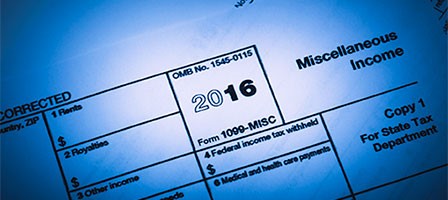YEARS OF INFLATION AND THE AMT POSE A GROWING TAX THREAT
Originally conceived to combat taxpayers in the higher-income brackets who utilized legal tax shelters and tax preferences to avoid paying income tax, the AMT can be tricky and hit you when least expected. The tax was supposed to inflict a “minimum” tax on those who were able to avoid the regular tax. However, years of inflation have pushed many middle-income taxpayers into the reach of the AMT. Although there is a long list of items that can trigger the AMT, for most individuals, the triggers include the following or a combination of the items listed below:
- Preference income from exercising stock options from an employer’s qualified plan, sometimes referred to as incentive stock options (ISOs);
- Having a large number of dependents;
- Having large itemized tax deductions;
- Having large miscellaneous itemized deductions;
- Large itemized deductions for state income or sales tax, real property tax and personal property tax;
- Large medical itemized tax deductions;
- Home equity debt interest deduction; and
- Interest income from private activity bonds.
In addition to those items listed above, watch out for transactions involving limited partnerships, depreciation and business tax credits only allowed against the regular tax. All of these can strongly impact your bottom line tax and raise a question of possible AMT.
Tax Tip: If you were subject to the AMT in the prior year and had a state tax refund in that year, part or all of your state income tax refund from that year may not be includable in the regular tax computation. To the extent you received no tax benefit from the state tax deduction because of the AMT, that portion of the refund is not includable in the subsequent year’s income.
As part of the American Taxpayer Relief Act of 2012, Congress has permanently made the amount of income that is exempt from AMT – referred to as the exemption amounts – subject to inflation adjustments in future years. Thus the amount for each subsequent year will be determined automatically and no longer require periodic Congressional action. In addition to the exemption amounts, ATRA also includes a provision for years after 2012 to inflation-adjust the amount of AMT taxable income that is taxed at the higher AMT rate of 28%.


The exemption begins to phase out for higher income taxpayers when the AMT gross income exceeds the phase-out threshold and is fully phased out once the AMT gross income reaches the full phase out amount. When income is between the threshold and full phase-out amounts, the amount of the exemption phase-out is 25% of the difference between the AMT gross income and threshold amount.
Example: Jack, a single taxpayer in 2016, has an AMT gross income of $200,000. The phase-out threshold from the table below is $119,700. The phase-out amount is $20,075 ((200,000 – 119,700) x 25%). The exemption for a single individual in 2016 from the table above is $53,900. Thus, our single taxpayer will only be able to deduct $33,825 ($53,900 – $20,075) as his 2016 AMT exemption.

Example: Using Jack in the previous example, his AMT gross income was $200,000, and his allowable AMT exemption was determined to be $33,825. Thus his AMT taxable income is $166,175 ($200,000 – $33,825). Since the entire taxable income falls into the 26% AMT tax rate his AMT tax is $43,206 ($166,175 x 26%). Jack tax for the year will be the higher of his regular tax or the AMT.
If you have questions about how the AMT might impact your taxes please give this office a call








Leave a Reply
Want to join the discussion?Feel free to contribute!